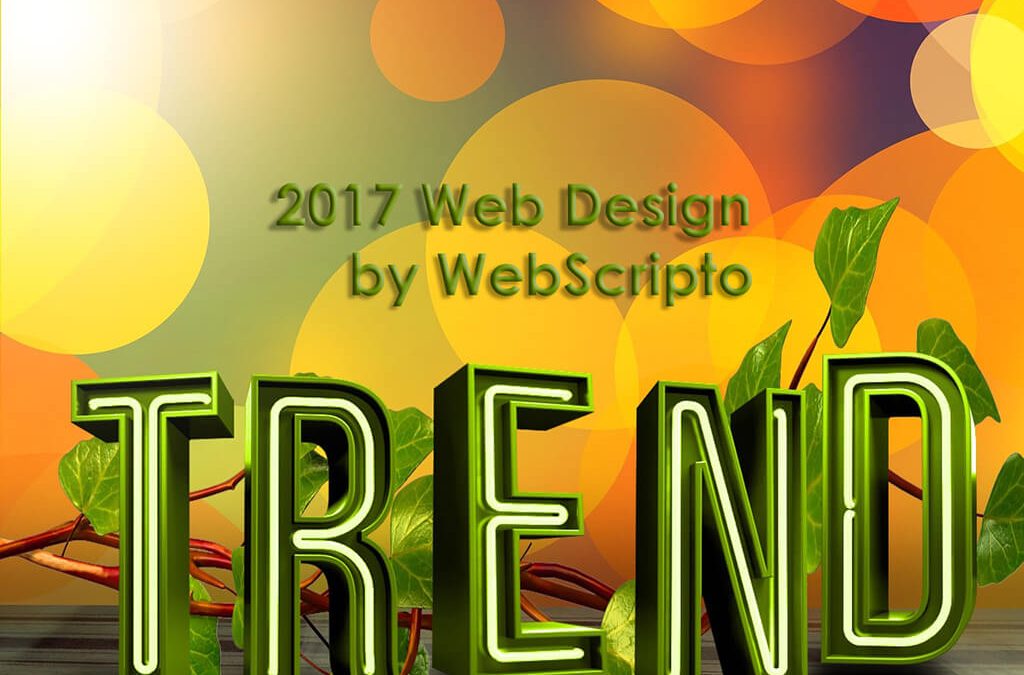1. Minimalistic designs
Minimalistic design has been part of 2015 and 2016 and it does not appear to slow down. With minimalistic design it is possible to place more emphasis on the content of a specific website. Less cluttered, translates into being organised, a clear message that visitors to a website takes due note of.
2. Micro-interactions/Animation
The name “micro-interactions” may sound strange and may even be confusing. In the website design context, it refers to small/minute animations that creates the impression of interaction with a website. Small movements when an item has been clicked on or touched on a mobile, or a touch screen device, create a feeling of interaction between the visitor and the website. As we are adapting to new technology, people prefer to engage with a website as opposed to only visiting it.
3. Videos (with sound)
Videos have been part of the web designer’s toolkit for some time now. Not only will the use of videos explain the products and services and be used more often, it will also be used more extensively as a design tool in full screen sizes. The ability to make video sizes smaller without too much loss of quality will surely lead to more use of videos on websites. This will apply even more to mobile layouts as designers often disable video layouts due to the high costs of mobile data.
4. Rich Colours/Gradients
Although the use of rich colours have been around for a couple of years, there appears to be no slowdown in this trend. To add to the use of rich colours in website design, the utilisation of gradients in illustrations, backgrounds, banners etc. are also on the increase and appears to be growing strongly.
5. More Illustrations
Images in websites are good and has been around for so long that it needs no explanation in the context of this article. Although it will never disappear, the shortage in respect of good applicable images has been for some time the Achilles heel of many designers. Illustrations have started to fill this gap and its use is in a state of immense growth. Where stock images cannot convey a specific message and appears generic at its best, illustrations are much more effective in getting the specific message across to a site’s visitors.
6. Infinite scrolling
Infinite scrolling has also been around for some time and appears to be gaining more support amongst website owners. Due to its lower costs and ease of navigation it will still grow in popularity, specifically in respect of smaller websites.
7. Parallax
Despite its critics, (I used to be one myself), parallax has not only grown in popularity, but has also seen some good use in designs. More complex parallax layouts can be expected this year. We are already starting to see horizontal parallax effects as opposed to the “old” vertical effect.
8. Cards to remain
Cards are small pieces of information, each bundled into its own neat little place on a web page. By placing background colours in cards it stands out from the rest of the web content. From a layout and more specifically a user experience (UX) point of view, cards are necessary to keep different sections of information separate from one another. This in turn offers web designers the opportunity to design some neat and well-placed cards on various pages.
9.Virtual Reality (Baby steps)
Virtual Reality needs no introduction. Almost all cell phones can be converted into some sort of virtual reality device with a view pieces of card board. Web designers have started to use VR in some way or another in various websites. VR is currently in its infancy within web design and is currently confined to a small genre but is expected to grow immensely as the technology behind it is developed further.
10. Big and Bold Type
Big and Bold type has also been around the block a couple of times but appears to have the stamina to go around for many more laps. Few things beat a bold statement using bold text to grab a website visitor’s attention and keep it. 2017 will not only see the continued use of bold typefaces but also see more and more good designs built around it.
11. Yeah, more SVG
Scalable Vector Graphics, the pure joy of working with them cannot be overemphasised. As the name suggest it is vector based and scalable. This means no pixels (rasterized images or text) and pixilation. This means that the same image can be displayed in different sizes on a website without any loss in quality. With screens becoming better (retina display and equivalent HD devices) the need for better graphics such as SVG is going to increase during 2017.
12. Extremely Simple Home pages
Many companies still have cluttered front pages with a massive amount of detail, links, navigation menus, all fighting for attention. Fortunately, this is in the process of being replaced by extremely simple homepages. Not only is this being addressed by beautiful full screen images, but also by short, but strong attention grabbing text. In addition, we foresee that navigation menus are also going to be simplified.
There are several other design trends that will be evident during 2017. We have just covered (in our view) the most important ones. Please feel free to comment below if you think a deserving trend should be included.
Update:
You are welcome to also read our article on Website Design Trends Expected in 2018:
- The Importance of Web Accessibility - 15th April 2023
- The Importance of Website Maintenance: Keeping Your Online Presence in Top Shape - 13th April 2023
- Engage prospective clients with blogposts: - 24th February 2023

